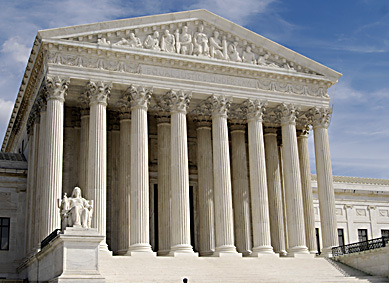Justice Anthony Kennedy, during discussion of arguments for overturning California’s Proposition 8, stated that same-sex marriage was like heading into “uncharted waters.” Not so, at least not from the perspective of the Catholic Church. She would argue that these are well known shoals, clearly labeled on the navigators’ charts.
But the culture in America is not steeped in the Church’s teaching,though a number of the Supreme Court justices, who are Catholic, should be. But for the majority of Americans, perhaps the real story about calls for same-sex marriage is “how did we get here?” This is where Ross Douthat plays a helpful role in breaking down what has happened to the institution of marriage.
You will want to read the entire piece, which Douthat warns is long. Here’s a snippet that caught my eye.
But there’s another story you can tell here, about how different models of marriage work out (or don’t) for different communities and socioeconomic groups. Liberal doubts about the past existence of a procreative grounding for marriage notwithstanding, there’s a general understanding that the combination of the sexual revolution, economic change, and shifting gender norms have altered the way Americans conceptualize marriage, what they expect out of the institution, and how it shapes their romantic and reproductive choices. There are different takes on how this change has worked and what it means, celebratory and critical and everywhere in between — from Stephanie Coontz’s line about “how love conquered marriage” to Justin Wolfers and Betsey Stevenson’s description of a new “consumption partnership” model of wedlock to the George-Gergis-Anderson view of a “revisionist” view of marriage displacing a “conjugal” understanding. But I think a lot of people would recognize the phenomenonas the National Marriage Project describes it:
Over the last four decades, many Americans have moved away from identifying with an “institutional” model of marriage, which seeks to integrate sex, parenthood, economic cooperation, and emotional intimacy in a permanent union. This model has been overwritten by the “soul mate” model, which sees marriage as primarily a couple-centered vehicle for personal growth, emotional intimacy, and shared consumption that depends for its survival on the happiness of both spouses. Thus where marriage used to serve as the gateway to responsible adulthood, it has come to be increasingly seen as a capstone of sorts that signals couples have arrived, both financially and emotionally—or are on the cusp of arriving.
As the passage suggests, this model didn’t just spring into being fully formed in 1968 or so: It developed gradually, through experiments and experience and also through cultural conflict with alternative models — both a more institutional and procreation-oriented model, which remained (and still remains) influential, especially among more religious Americans, and the more purely libertine, entirely deinstitutionalized approach to sex and relationships that gave us so many wonderful trends in the 1970s. To the extent that the “soul mate”/capstone model has steadily gained ground relative to the alternatives, it’s because it seems to offer a plausible, stabilizing balance between sexual freedom and sexual restraint, new gender roles and traditional forms, adult liberty and children’s needs, the secular and the spiritual. And it offers, as well, a model of marriage that can easily encompass gay and lesbian partnerships as well as male-female ones, which is why the idea of same-sex wedlock has passed so quickly from seeming absurd to seeming commonsensical.
But whereas the institutional model was associated with similar family structures for rich and poor alike, the soulmate/capstone model has thus far only really been stabilizing for the upper and upper middle classes. For the most vulnerable Americans, poor African-Americans and then whites, the new model never had a chance to work: The ’70s-era combination of sudden sexual freedom and economic stagnation — and if you accept the Charles Murray thesis, perverse welfare policies — more or less demolished traditional family structures in a generation, helping to create the underclass as we know it today. For Middle America, meanwhile, there has been a slower but unmistakable drift away from two-parent households and stable families, which has accelerated as the forces propping the older, institutional understanding — traditional Christianity, in particular — have seen their influence over American life diminish. Only among the college-educated has the new model brought anything like the kind of stability that Americans took for granted half a century ago — mostly, one might submit, because the rewards for following a careful “education, job, marriage, kids” trajectory are so obvious that college-educated American understand the marriage-procreation connection intuitively, as a kind of gnostic wisdom that doesn’t need to be spelled out.












